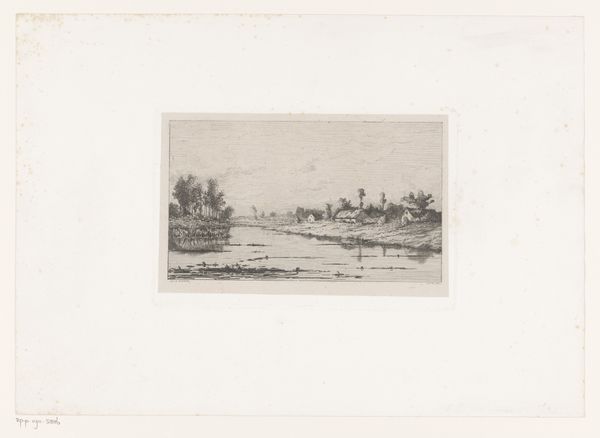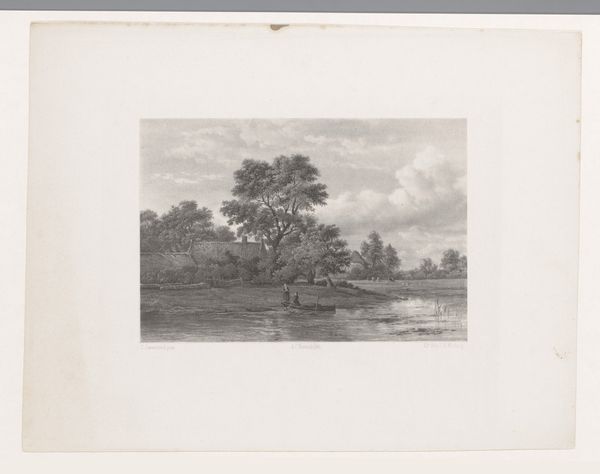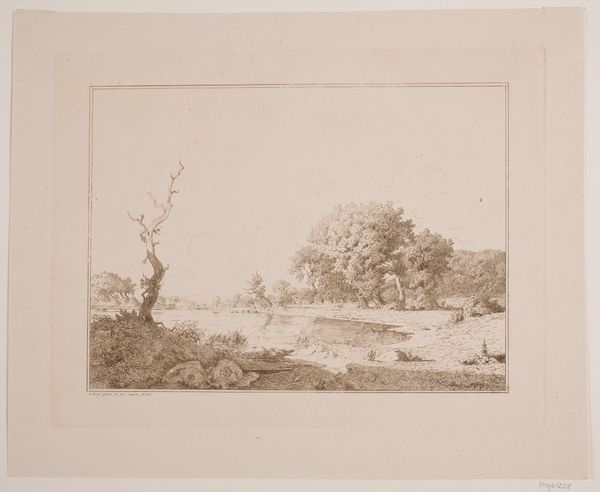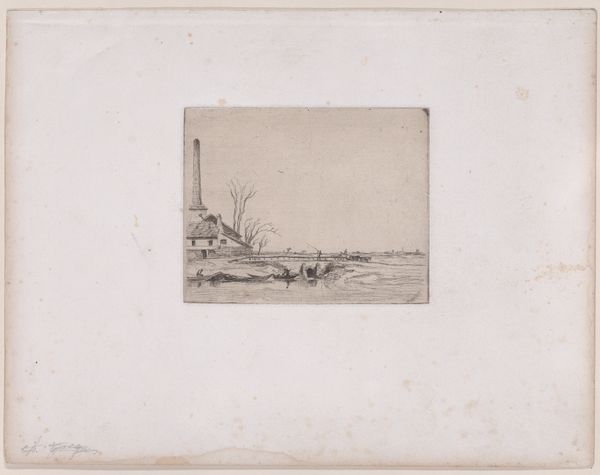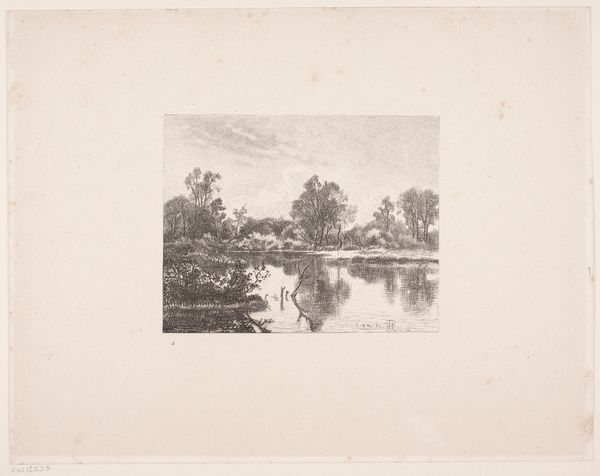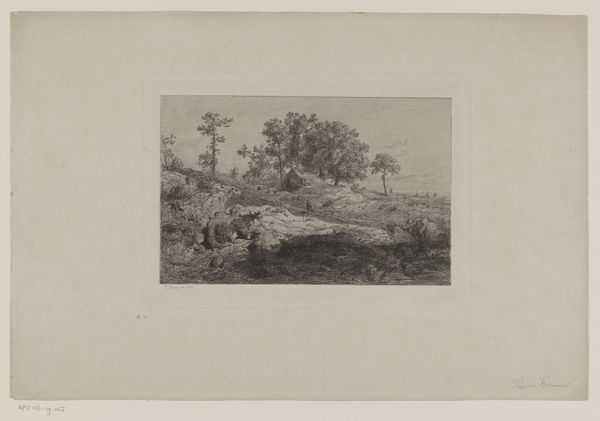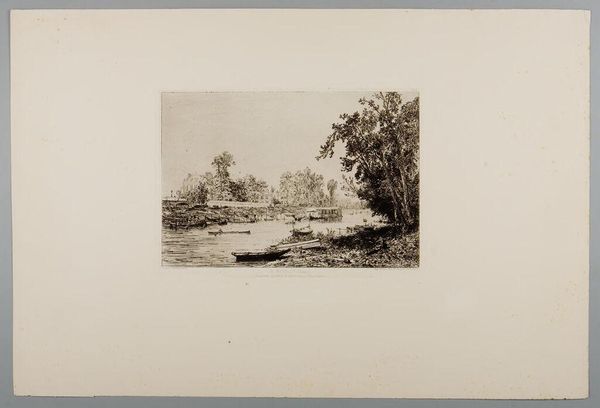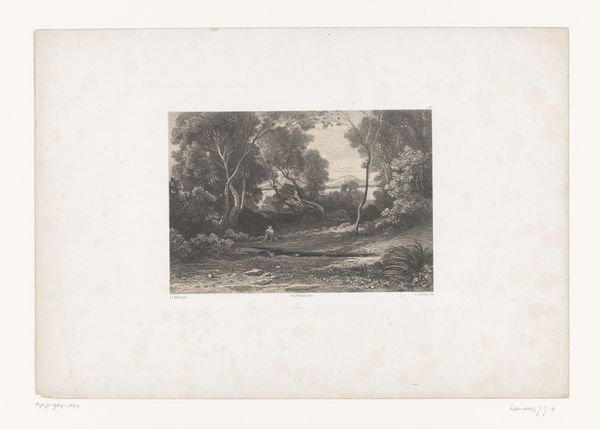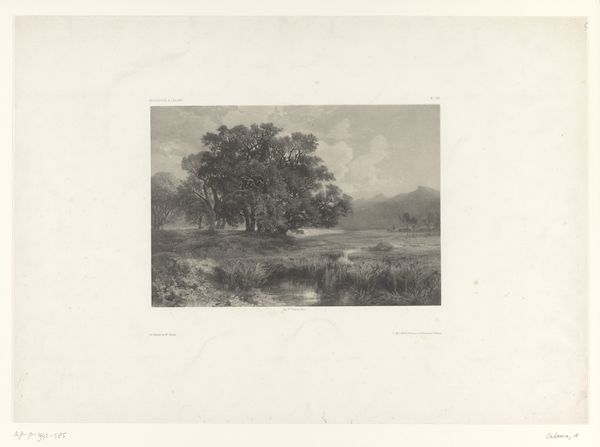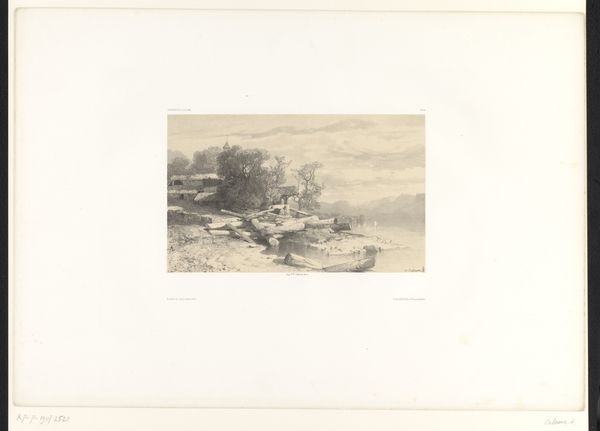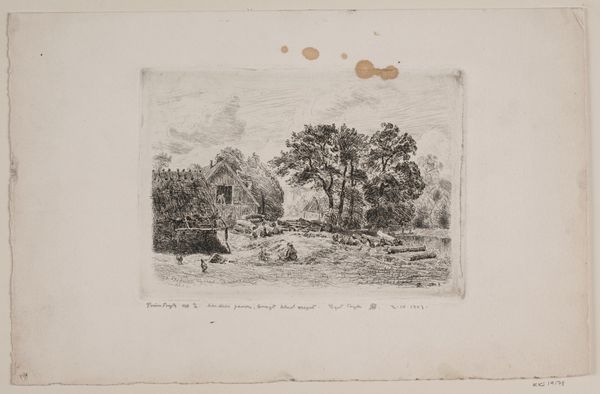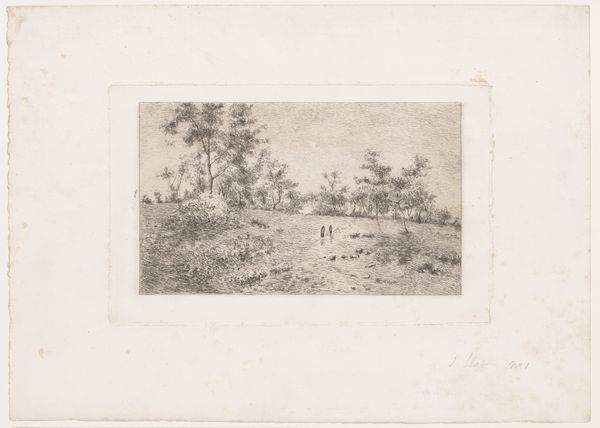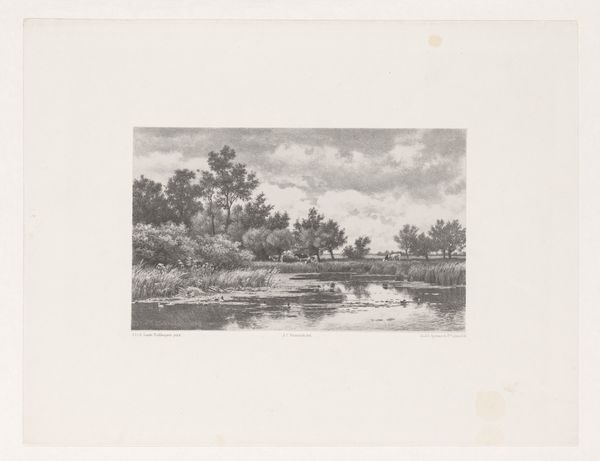
drawing, print, etching, ink, engraving
#
drawing
#
ink painting
# print
#
etching
#
landscape
#
etching
#
charcoal drawing
#
ink
#
line
#
engraving
#
watercolor
#
realism
Dimensions: 205 mm (height) x 260 mm (width) (plademaal)
Curator: Welcome. We are standing before Georg Emil Libert's "Landskab," created in 1841. It's a landscape rendered with etching, engraving, and ink, showcasing a mastery of line and tone. Editor: It possesses such quietude. The sepia tones and gentle lines create a somber, almost melancholic atmosphere, despite depicting an open landscape. Curator: Consider the Romantic era’s obsession with the sublimity of nature, the sense of awe but also of vulnerability in the face of it. Libert was working within a context of intense national and artistic identity formation in Denmark. How might this idealized landscape also function as a symbolic assertion of territory or cultural heritage? Editor: The muted palette certainly recalls a romanticized past, perhaps a visual longing for a simpler connection with the land. The water's surface acts as a mirror reflecting the sky. Water often carries complex symbolism; does this instance also connect to themes of reflection, transition, or the unconscious? Curator: That’s insightful. The mirrored sky also makes me consider the power structures embedded within representations of landscape during that era. Who had access to land, to leisure, to this kind of “untouched” nature, and who did not? The painting invites us to confront inequalities through the seemingly idyllic scenery. Editor: And what of the placement of those few sparse trees and foliage groupings within the composition? There is an emphasis on certain features against an open sky. Do you think the shapes hint at the concept of resilience, that quiet assertion to survive even when surrounded by nothingness? Curator: I think it does. Libert, in his careful choice of what to depict and how, potentially highlights the tension between humanity’s desire to control the environment and the enduring power of the natural world. How does the art stand in conversation with the rise of industrialization happening simultaneously? Editor: Fascinating! Ultimately, Libert leaves us pondering about identity and time. It’s as if we are encountering cultural memories embedded in this scene. Curator: Precisely. By exploring historical and social contexts in relation to visual components, we gain a richer, intersectional understanding of this evocative "Landskab".
Comments
No comments
Be the first to comment and join the conversation on the ultimate creative platform.
